In machine learning, what is the process of allowing a model to adjust its parameters based on data to improve its performance?
What is the definition of Artificial intelligence?
What type of automation is recommended for the following high-level solution diagram?
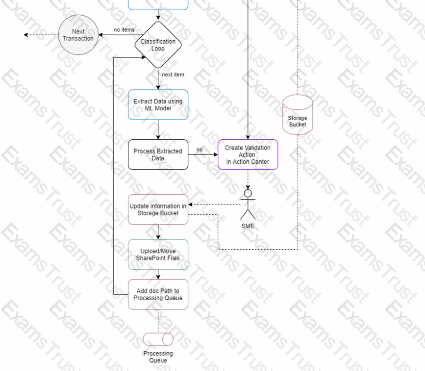
Which of the following describes the function of Clustering in ensuring high availability for UiPath Orchestrator?
What role must approve the Pull Requests into the Main Branch?
What is the difference between rule-based and model-based data extraction methodologies?
Given the blowing diagram how on the process be optimized from the steps perspective?

For implementing an unattended transactional process what pre-build UiPath Template is the best fit?
How can a user effectively store and query data using Entity Records in UiPath Data Service tor RPA projects?
What is the difference between 'Add Transaction Item’ activity and "Add Queue Item' activity?
Arrange the flow steps in UiPath Test Manager before deployment in the right order.
Instructions: Drag the Description found on the left and drop on the correct Step Sequence found on the right.
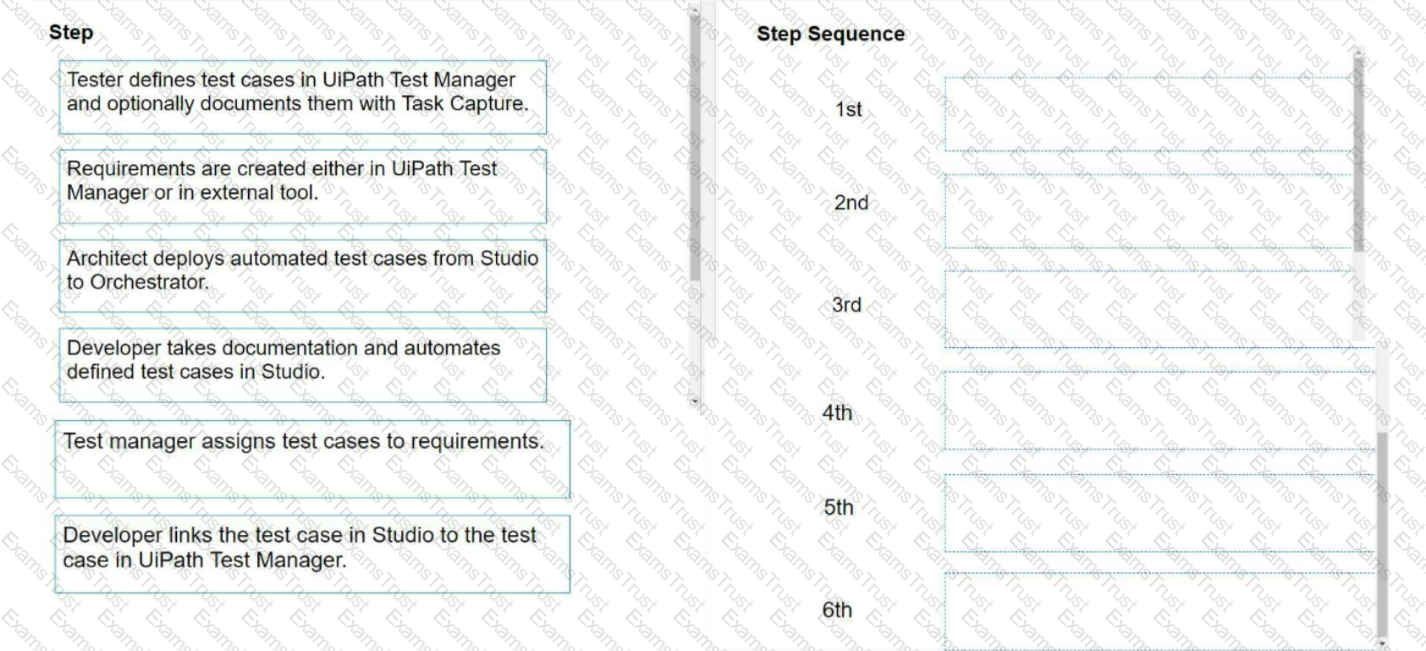
Which are the main elements revolving around UiPath Automation Hub?
What is the main advantage of creating a UiPath App?
Which is the best approach to invite 100 users simultaneously to UiPath Automation Cloud?
What are the permissions required for a document validation user?
How can a user set up a Calendar for Non-Working Days in UiPath Orchestrator?
Which UiPath Studio main entry file and project settings are correct for implementing the following high-level solution diagram?
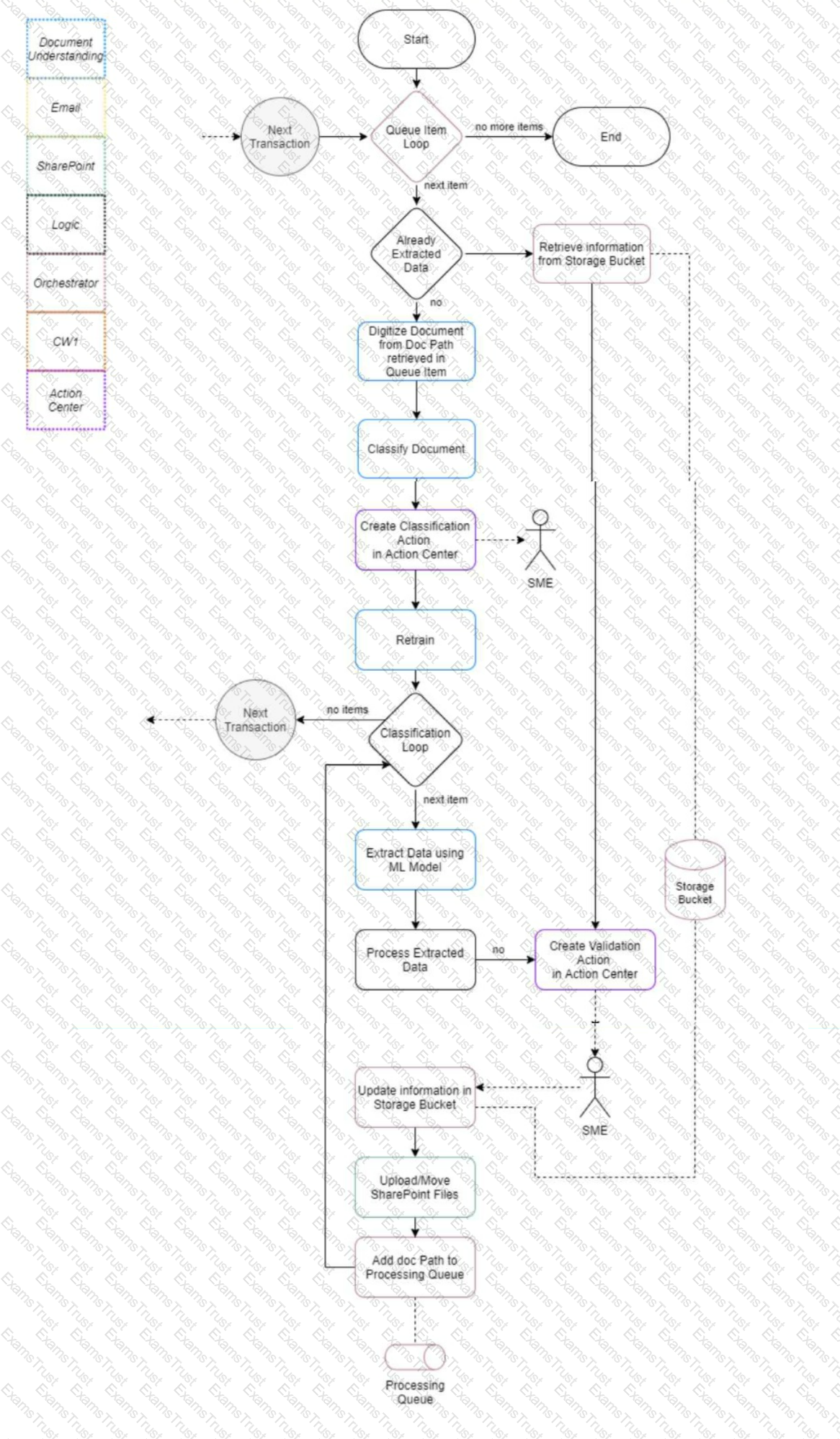
Exhibit A
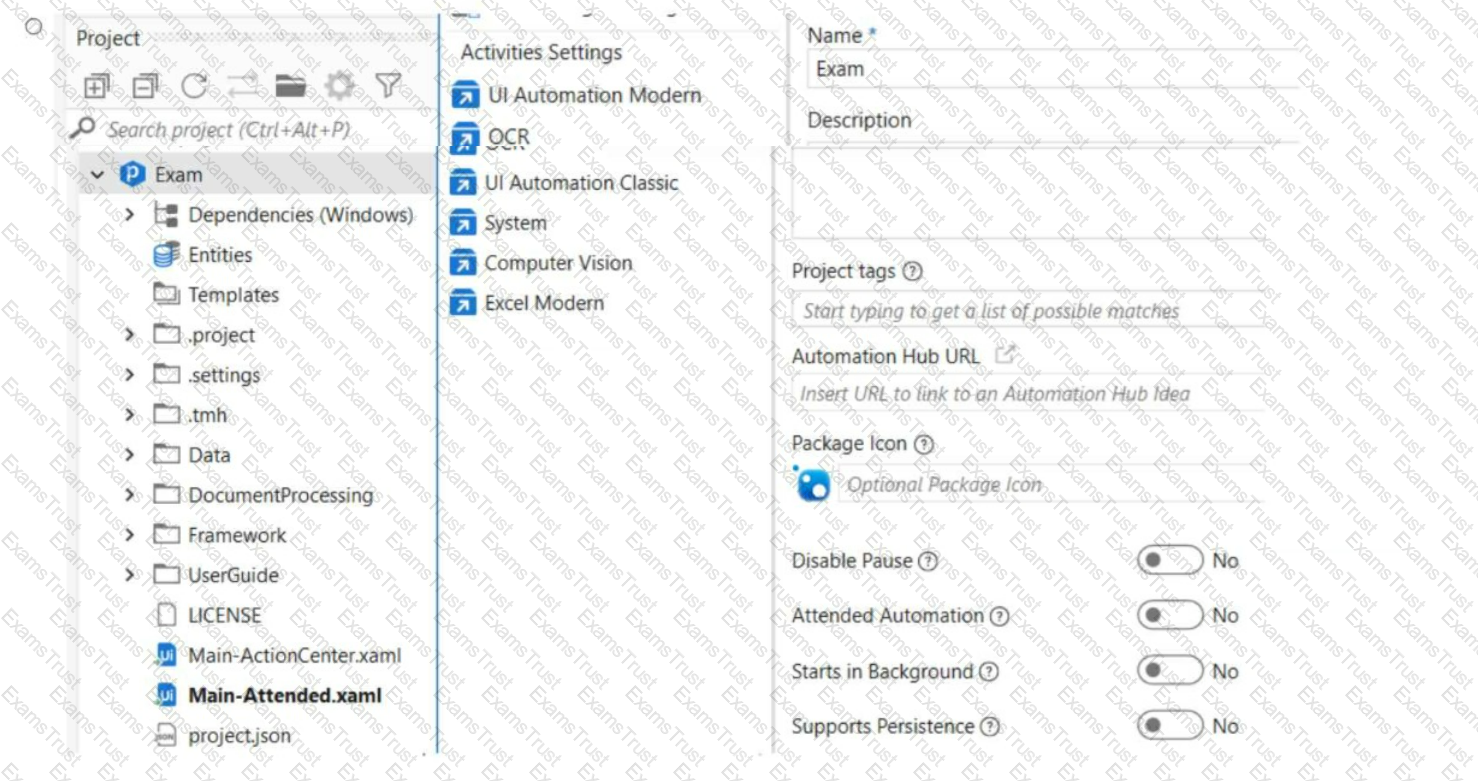
Exhibit B
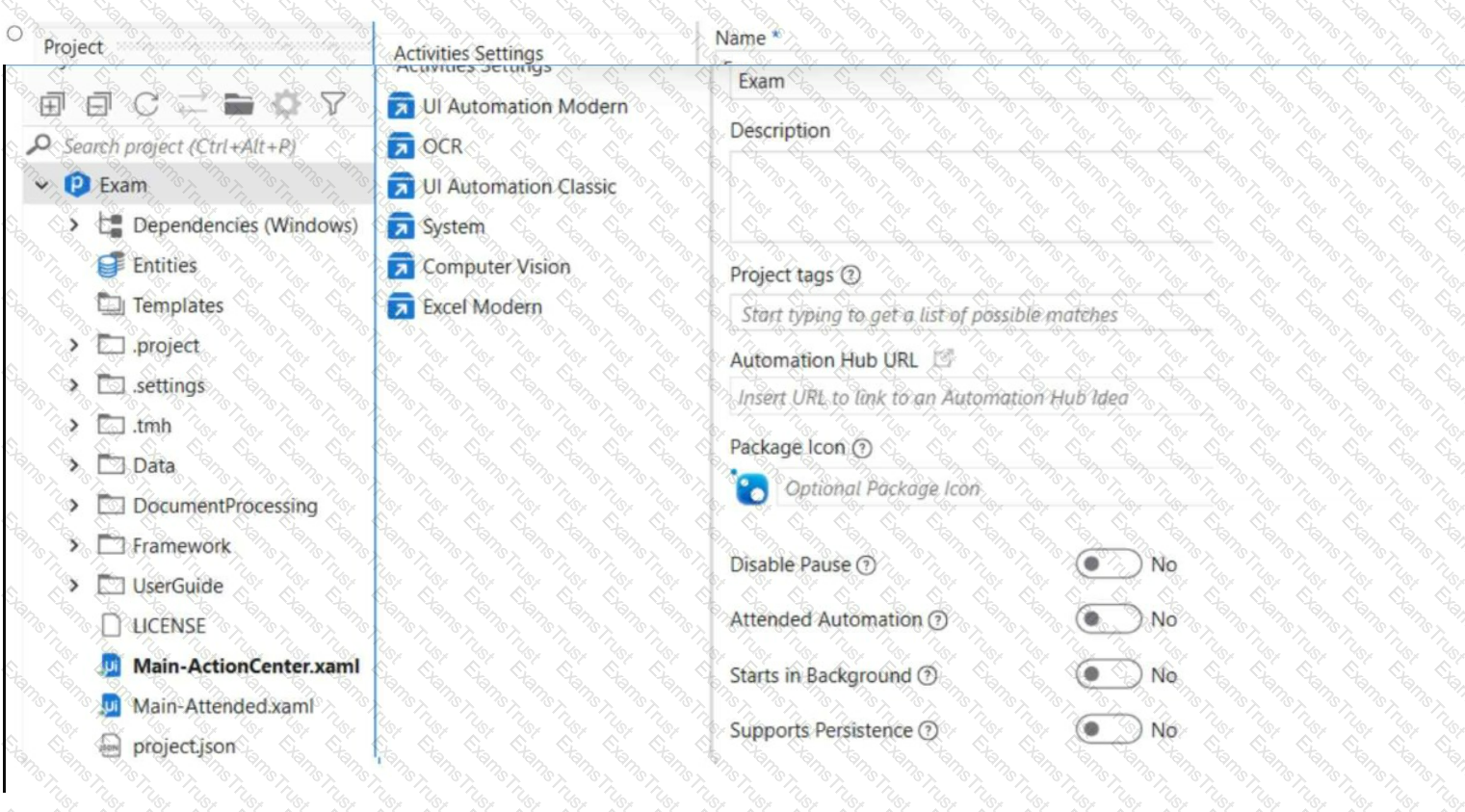
Exhibit C
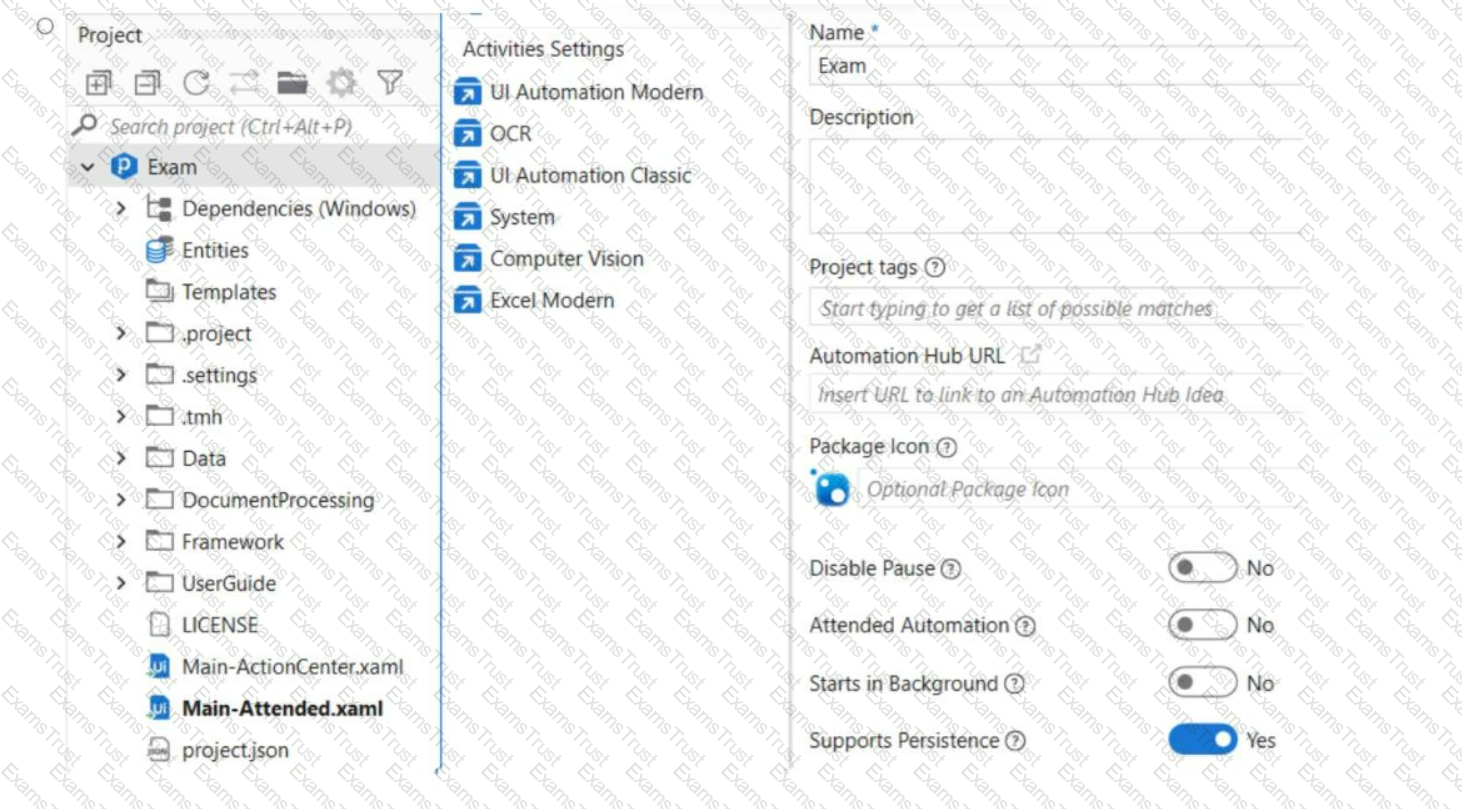
Exhibit D
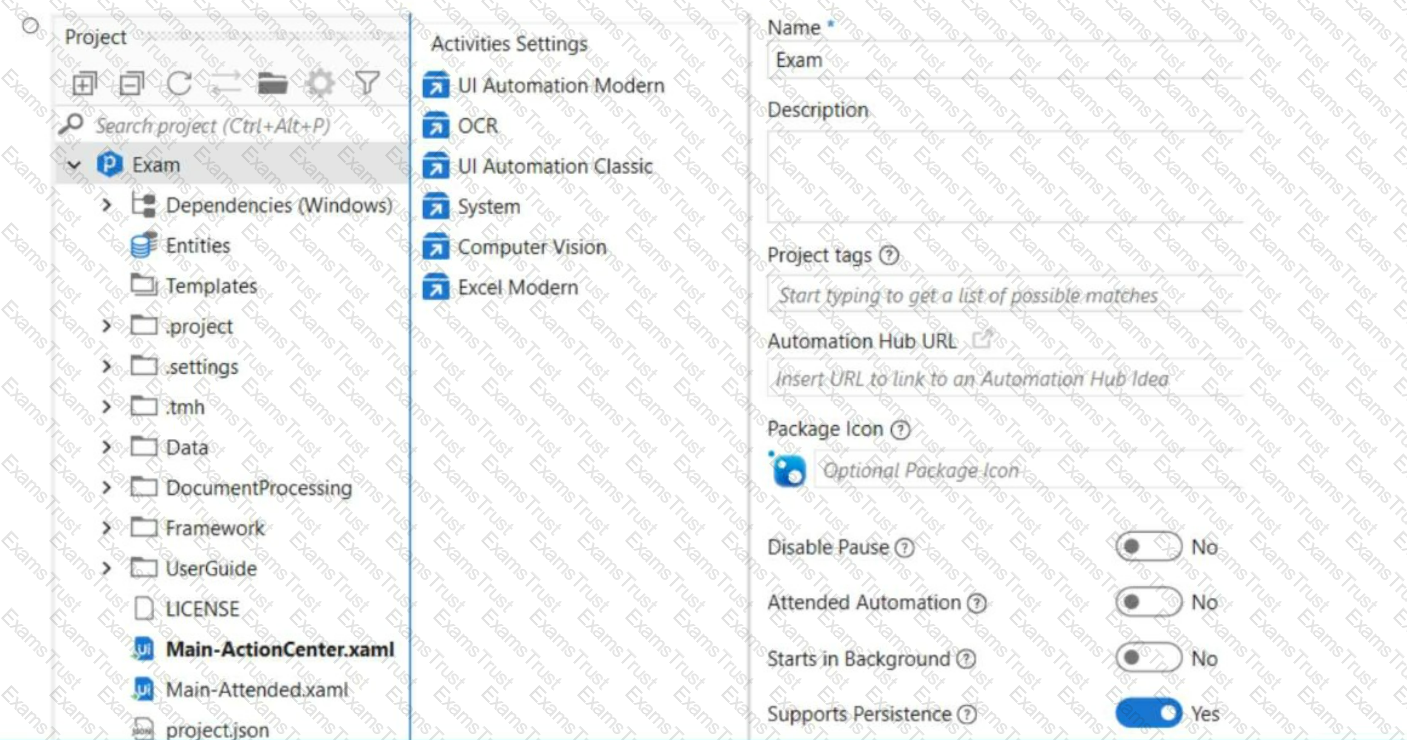
Which UiPath Task Mining integrator allows for documented tasks to be exported as automaton ideas?
Why we stability and standardization crucial factors when assessing the technical feasibility of process automaton?
Which package needs to be installed in order for the Taxonomy Manager wizard to appear in the top ribbon of the UiPath Studio?
What is the UiPath Document Understanding (DU) Process template purpose role?
Which of the Mowing can be achieved by using Automaton Ops?
Which of the options below represent tasks that are well-suited for automation?
What is a requirement to access Automation Cloud?
What are two key best practices for UiPath license estimation?
What is the purpose of UiPath Solution Accelerators?
Which of the following models are available in UiPath Al Center tor UAPath Automation Suite?
A user is conducting a code review for a project that needs to be executed daily and carries out the following tasks:
- Establish a connection with a department mailbox and filter all unread emails that have "Invoice" in their subject line.
- For every filtered email: - Download all the attachments contained within.
- Mark the email as "Read".
The following image displays the Process.xaml workflow for the Performer process, which was developed using the REFramework:
[J] Process• ft
©
| ► Email Processing\FindEmailsToProcess.xaml * In... ft Filter unread emails with subject containing 'Invoice'
Workflow file name
'Email_Processing\FmdEmailsToProcess.xaml*-
Import Arguments 2 Open Workflow
▼
O For Each Found Email • ft
ForEach_____________________ In
currentEmailEmaiisToProcess
(«] Body • ft
©
► Email. Processing\DownloadAttachmentsFromEmail... • ft Download all attachments from email to appropriate folder
Workflow file name ■Email_Processing\DownloadAnachmentsFromEmail-> «.
Import Arguments 2 Open Workflow
► Email Processing\MarkEmailAsRead xaml I... ft Processing is complete so mark the email as 'Read'
Workflow file name ■Email_Processing\MarkEmailAsReadJ(aml* -
Import Arguments 2 Open Workflow © ©
What is wrong with this design?
What is the recommended course of action when dealing with the choice of using a template for the Solution Design Document (SOD)?
What is the benefit of assigning folders to be assets sheet in the ‘Config.xlsx’’ of an RPA project?
What key difference exist between optical Character Recognition (OCR) and UiPath understanding technologies, and how do these affect their role in business processes?
What is a UiPath best practice for code repository management?
What are the benefits of having the UiPath Document Understanding Process templates as part of an End-to-end Business Process (Upstream Automation > DU Process > Downstream Automation), and enabling the one-job-Per-File approach?
Consider the following business scenario which has to be automated:
Invoices arrive in various mailboxes and their information must be extracted and entered into SAP
Which architectural approach is best for this?
What is the purpose of the UiPath Automation Hub within the UiPath ecosystem?
What is a critical security and compliance check performed by the Solution Architect during code reviews?
What is the purpose of ‘’The automation Runbook’’ document?
In the context of an Orchestration Process, what is the maximum number (or other job triggers) that a job can wait for at a time?
What is the main purpose of Workflow Analyzer in UiPath Studio?
In the license estimation process, what might indicate the need for additional licenses during the process design stage?
Which of the following feeds can be used to deploy a package? Select the option that members all that apply:
What are the main functionalities inside a UiPath Test Manager project?
Exhibit.
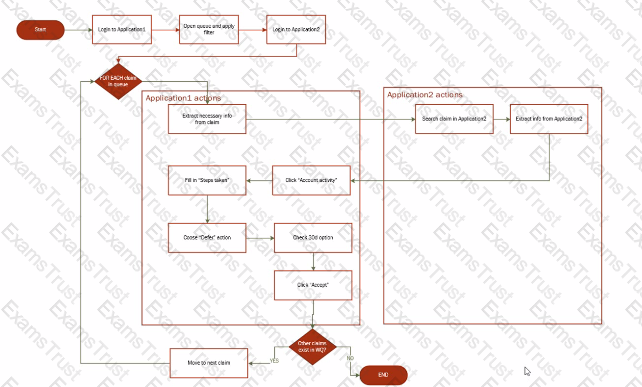
Consider the following diagram:
What is the problem with the way the solution architect designed it?
How does scalability impact the design of a UiPath automaton flowchart and what strategies can ensure it handles increased process volume?
How can a user trigger a robot in UiPath Action Center to start an automated process?